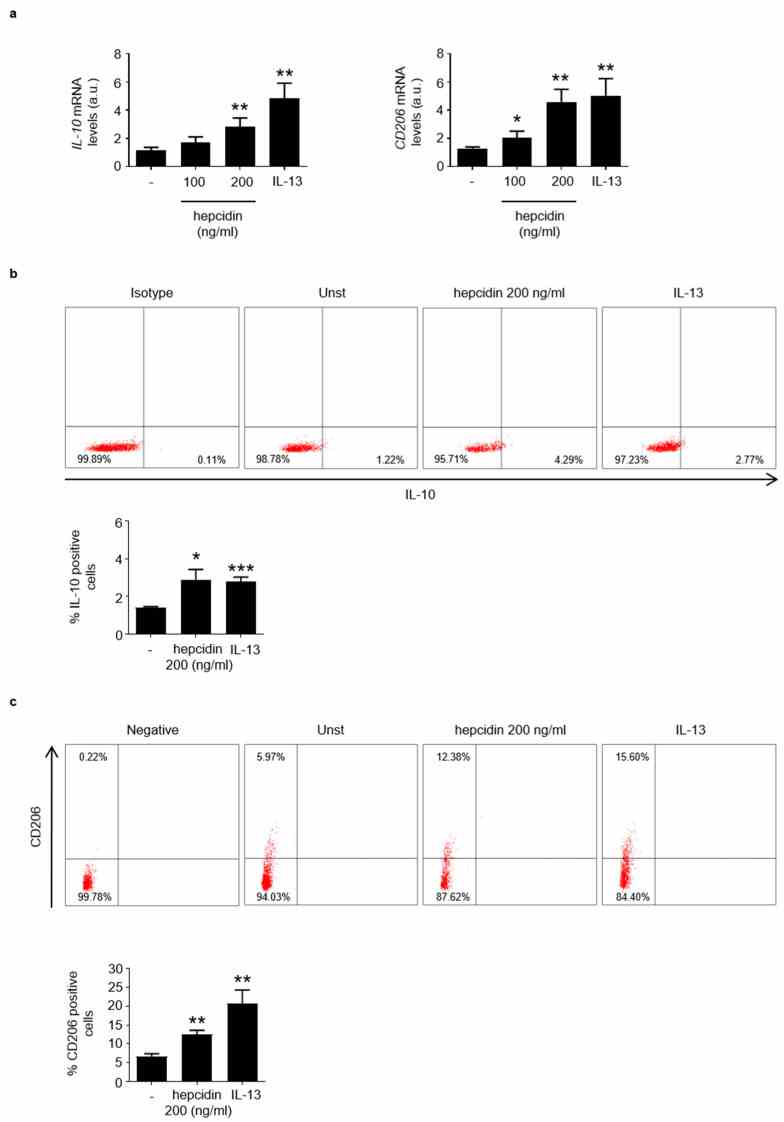Recombinant Rhesus Interleukin 13
| Cat.No. : | IL13-146R |
| Product Overview : | Recombinant Rhesus Interleukin 13 encoding the Rhesus IL13 (NP_001028101.1) (Met 1 – Asn 132) precursor was expressed inCHO Cells. |
- Specification
- Gene Information
- Related Products
- Citation
- Download
| Species : | Rhesus macaque |
| Source : | CHO |
| Tag : | Non |
| Protein Length : | 1-132 a.a. |
| Description : | Interleukin 13 (IL-13) is a single-chain cytokine which belongs to the IL13/IL4 family. In humans, IL13 is secreted by many cell types, but especially by T helper type 2 (Th2) cells. IL13 inhibits the production of pro-inflammatory cytokines and chemokines, and thus down-regulates macrophage activity. Meanwhile, IL-13 synergizes with IL2 in regulating IFN-gamma synthesis. IL-13 binds to a multi-subunit receptor comprising the alpha chain of the IL-4 receptor (IL-4Rα) and at least one of two known IL-13-specific binding chains (IL13 Rα1 and IL13 Rα2), and exerts its effects through signal transducer and activator of transcription 6 (STAT6), like IL-4. Accordingly, IL-13 may be critical in regulating inflammatory and immune responses as a central mediator in various cell types. |
| Molecular Mass : | The recombinant rhesus IL13 consists of 112 amino acids and has a calculated molecular mass of 12 kDa also estimated by SDS-PAGE under reducing conditions. |
| Predicted N Terminal : | Ser 21. |
| Endotoxin : | < 1.0 EU per 1μg cytokine as determined by the LAL method. |
| Formulation : | Supplied as a 0.2μm filtered solution of 20 mM Tris, 10 mM NaCl, pH 8.0. |
| Reconstitution : | Follow the instructions on the vial. Centrifuge the vial at 4℃ before opening to recover the entire contents. |
| Purity : | > 97%, as determined by SDS-PAGE. |
| Stability : | Samples are stable for up to twelve months from date of receipt -70°C. |
| Storage : | Store it under sterile conditions at -70°C. It is recommended that the protein be aliquoted for optimal storage and be used as soon as possible. Avoid repeated freeze-thaw cycles. |
| Gene Name | IL13 interleukin 13 [ Macaca mulatta ] |
| Synonyms | IL13; interleukin 13;interleukin-13 |
| Gene ID | 574325 |
| mRNA Refseq | NM_001032929 |
| Protein Refseq | NP_001028101 |
| UniProt ID | Q864V6 |
| Pathway | Asthma; Cytokine-cytokine receptor interaction; Fc epsilon RI signaling pathway; Jak-STAT signaling pathway |
| ◆ Recombinant Proteins | ||
| Il13-042M | Recombinant Mouse interleukin 13 Protein, His&Flag tagged | +Inquiry |
| IL13-14149H | Recombinant Human IL13, His-tagged | +Inquiry |
| IL13-3108H | Recombinant Human IL13 Protein (Pro21-Asn132), His tagged | +Inquiry |
| IL13-50H | Active Recombinant Human Interleukin 13, MIgG2a Fc-tagged | +Inquiry |
| IL13-856H | Recombinant Human IL13 protein, His & T7-tagged | +Inquiry |
| ◆ Cell & Tissue Lysates | ||
| IL13-1336MCL | Recombinant Mouse IL13 cell lysate | +Inquiry |
| IL13-1894CCL | Recombinant Cynomolgus IL13 cell lysate | +Inquiry |
| IL13-2922HCL | Recombinant Human IL13 cell lysate | +Inquiry |
| IL13-001HCL | Recombinant Human IL13 cell lysate | +Inquiry |
Hepcidin Upregulation in Colorectal Cancer Associates with Accumulation of Regulatory Macrophages and Epithelial–Mesenchymal Transition and Correlates with Progression of the Disease
Journal: Cancers PubMed ID: 36358713 Data: 2022/10/27
Authors: Antonio Di Grazia, Davide Di Fusco, Luisa Circelli
Article Snippet:To determine the contribution of Stat3 on cytokine-induced hepcidin expression, HCEC-1ct (1 × 10 5 ) cells were transfected with either a Stat3 antisense oligonucleotide (AS) (5′-AGCTGATTCCATTGGGCCAT-3′) or control oligonucleotide with sense orientation (S) (both used at a final concentration of 200 nmol/L) for 24 h using Opti-MEM medium and Lipofectamine 3000 reagent (both from Life Technologies, Milan, Italy) and then stimulated with IL-6, IL-21 and IL-23 for further 20 h. To determine whether hepcidin controls expression of mesenchymal markers, HCT-116 (2.5 × 10 5 ) cells were transfected with either hepcidin siRNA (final concentration 10–25 nmol/L; Santa Cruz Biotechnology, Santa Cruz, CA, USA) or control siRNA (final concentration 10 nmol/L; Santa Cruz Biotechnology) for 24 h using Opti-MEM medium and Lipofectamine 3000 reagent.Cruz, CA, USA) or control siRNA (final concentration 10 nmol/L; Santa Cruz Biotechnology) for 24 h using Opti-MEM medium and Lipofectamine 3000 reagent. ... In further experiments, HCT116 cells were either left untreated or stimulated with exogenous hepcidin (1000 and 2000 ng/mL, Creative BioMart, Shirlay, NY, USA) for 30 min or 24 h. Peripheral blood mononuclear cells (PBMCs) were isolated from 6 healthy volunteers through density gradient centrifugation (Lympholyte-H; Cedarlane Labs, Burlington, ON, Canada) and cultured (1 × 10 6 ) in RPMI 1640 medium supp1lemented with 10% FBS and 1% P/S in the absence or presence of exogenous hepcidin (final concentration 100–200 ng/mL) or interleukin-13 (IL-13) (final concentration 50 ng/mL; Creative BioMart, Shirlay).. After 24 and 48 h, cells were used to analyze IL-10, CD163, CD206 and TNF by real-time (RT)-PCR and flow-cytometry, respectively.After 24 and 48 h, cells were used to analyze IL-10, CD163, CD206 and TNF by real-time (RT)-PCR and flow-cytometry, respectively.

Stimulation of blood mononuclear cells with hepcidin increases the percentages of IL-10- and CD206-expressing cells. ( a ). Blood mononuclear cells were either left unstimulated (Unst) or stimulated with exogenous hepcidin
The roles of TGF-β3 and peroxynitrite in removal of hyper-radiosensitivity by priming irradiation.
Journal: International journal of radiation biology PubMed ID: 24650070 Data: 2014/9/5
Authors: Nina Jeppesen Edin, Joe Alexander Sandvik, Erik Olai Pettersen
Article Snippet:The used concentrations of the different antibodies varied according to the manufacturer’s instructions.The used concentrations of the different antibodies varied according to the manufacturer’s instructions.. Recombinant interleukin 13 was purchased from Biomart (IL13-22H, Creative BioMart, NY 11967, USA), uric acid and Hypoxia-inducible factor 1a (HIF1a)-inhibitor chetomin from Sigma.
Not For Human Consumption!
Inquiry
- Reviews (0)
- Q&As (0)
Ask a Question for All IL13 Products
Required fields are marked with *
My Review for All IL13 Products
Required fields are marked with *



